Alaskan Fishing Fleet Catching Huge Proportion Of B.C. Salmon: New Report
Alaska harvests millions of Canadian salmon while Canadian fishermen tied to the dock
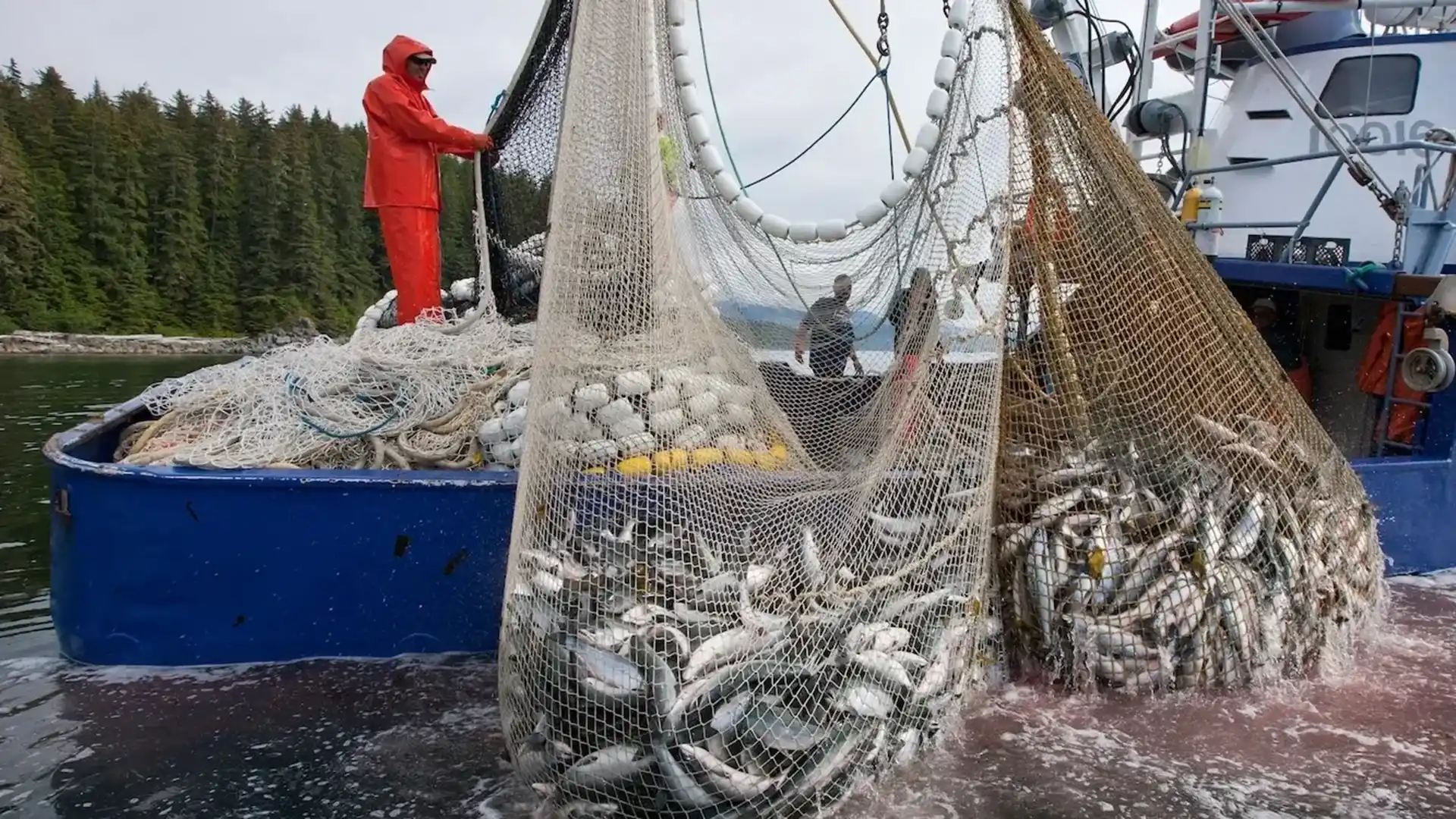
VICTORIA, B.C. — As salmon runs in British Columbia hit record lows, commercial fisheries along the Alaska panhandle are catching a growing share of salmon bound for B.C. rivers, according to a new technical report.
The report, which includes a detailed analysis on each B.C. salmon species caught in Southeast Alaskan interception fisheries, was commissioned by Watershed Watch Salmon Society and SkeenaWild Conservation Trust and comes as Canada and the United States begin their annual review of bilateral management under the Pacific Salmon Treaty.
Many of B.C.’s largest salmon runs pass through Alaskan waters on their way home to spawn in Canadian rivers. While commercial fishing was nearly non-existent in B.C. last summer, Alaskan fleets just across the border logged over 3,000 boat-days and harvested almost 800,000 sockeye (most of which were of Canadian origin). In addition to sockeye, tens of thousands of Canadian Chinook and coho were also harvested, as well as large but unknown numbers of co-migrating Canadian pink, chum, and steelhead, many of which come from threatened and endangered populations.
The report also highlights the potentially severe impacts of Alaskan harvest on endangered salmon and steelhead populations, and gaps in Alaskan catch monitoring and assessment that prevent responsible management of the fisheries.
“We knew the Alaskans were intercepting a lot of B.C. salmon,” said Greg Knox of SkeenaWild, “but the numbers in this report are staggering. I’m also appalled at their failure to report their bycatch of non-target species, which Canadian fishers are required to do.”
B.C. salmon numbers have hit record lows in recent years, prompting former federal fisheries minister Bernadette Jordan to close 60 per cent of B.C.’s commercial salmon fisheries in June, 2021. She also announced a major licence buyback program as part of Canada’s $647 million Pacific Salmon Strategy Initiative to rebuild depleted stocks. Indigenous and recreational fisheries have also had unprecedented closures in B.C.
Much of the interception of Canadian-bound salmon takes place in Alaska’s District 104, on the outer coast of the Alaska panhandle, where local rivers do not support significant salmon populations. Nearly all the salmon and steelhead caught in District 104 are bound for streams in Canada, elsewhere in Southeast Alaska, or other US states such as Washington and Oregon.
“Canada eliminated interception net fisheries similar to the District 104 fishery beginning in the early 1990s because of the risk they posed to non-target stocks,” said Greg Taylor, fisheries advisor to Watershed Watch and SkeenaWild. “It is difficult to monitor and control the impacts of large mixed-stock fisheries on smaller non-target salmon populations, which is why Alaskan managers avoid similar fisheries elsewhere in the state where their own salmon might be put at risk.”
“Alaskan fisheries are now the biggest harvesters of a growing number of depleted Canadian salmon populations,” said Aaron Hill, executive director of Watershed Watch Salmon Society.
“The Pacific Salmon Treaty will not be renewed until 2028, and history suggests Canada and the United States will likely come away from the negotiations with only incremental improvements,” said Misty MacDuffee of Raincoast Conservation Foundation.
“The Pacific Salmon Treaty has failed to protect our salmon and our fishers and we can’t wait until 2028 to fix it,” said Hill.
“The governments of Canada and B.C. need to stand up right now and do something about this Alaskan plunder.”
Knox, Taylor, Hill and MacDuffee argue that Alaska could close the worst of its interception fisheries, and reduce the impact of others, by locating its fisheries closer to its own streams, and still sustainably harvest its own salmon.
Greg Taylor,
Watershed Watch Salmon Society and SkeenaWild Conservation Trust
Aaron Hill,
Watershed Watch Salmon Society
Greg Knox,
SkeenaWild Conservation Trust
Misty MacDuffee,
Raincoast Conservation Foundation
Backgrounder on the Impacts of Alaskan Interception Fisheries on Canadian and Southern U.S. Salmon and Steelhead
How many Canadian salmon and steelhead are killed in Southeast Alaskan interception fisheries?
In 2021, nearly 800,0000 sockeye salmon were caught in southern Southeast Alaskan (SEAK) interception fisheries (Districts 101-104, 106). Based on data from past years, the majority of this catch was of Canadian origin.
Nearly 34 million pink salmon were caught in these same fisheries, with an unknown proportion of Canadian origin. Over 1.2 million chum were also caught, and while many of these were produced in Alaskan hatcheries, an unknown number of co-migrating B.C. chum were harvested, at a time when many B.C. north and central coast chum populations are at very low abundance.
About 51,000 Chinook were harvested in Southeast Alaskan troll fisheries, the vast majority of which were returning to B.C. and Washington. An additional but unknown number of Chinook and steelhead were caught and released (likely dead) in seine fisheries. 540,000 coho were also harvested, with an unknown proportion of B.C. origin.
It is difficult to estimate the number of Canadian and southern U.S. origin salmon and steelhead caught in Alaskan fisheries. Catches in each fishery are monitored in a different manner, and estimates are made using different methods for different species. For some combinations of areas, fisheries and species, (e.g. Skeena, Nass and Fraser sockeye in seine fisheries, Chinook in troll and recreational fisheries), Alaska provides relatively good information. However, for most other species caught SEAK (e.g. coho, pink, chum and steelhead), Alaska provides little to no information.
The lack of assessment information is even more problematic when the analysis dives deeper, into the sub-population level. For instance, even though there are 82 genetically distinct Nass, Skeena, and Fraser River sockeye populations with varying vulnerability to Southeast Alaskan interception fisheries, little attempt is made to understand the Alaskan impact on these populations. The same holds true for other salmon species caught in these fisheries.
Estimates of B.C. pink and chum salmon catch in Alaskan seine fisheries are based on results from tagging studies nearly 40 years ago. These studies suggest Alaskan net fisheries, and especially the District 104 fishery, catch large numbers of pink salmon returning to the north and central coast of B.C. at a time when Canadian fisheries in these areas have been closed to protect what is left of them.
Most Chinook and steelhead caught in Southeast Alaskan commercial seine fisheries are released (likely as dead fish) without being sampled for stock origin. However, many of these Chinook and steelhead originate in B.C. rivers that have seen unprecedented fishery closures in recent years due to severely depleted salmon stocks.
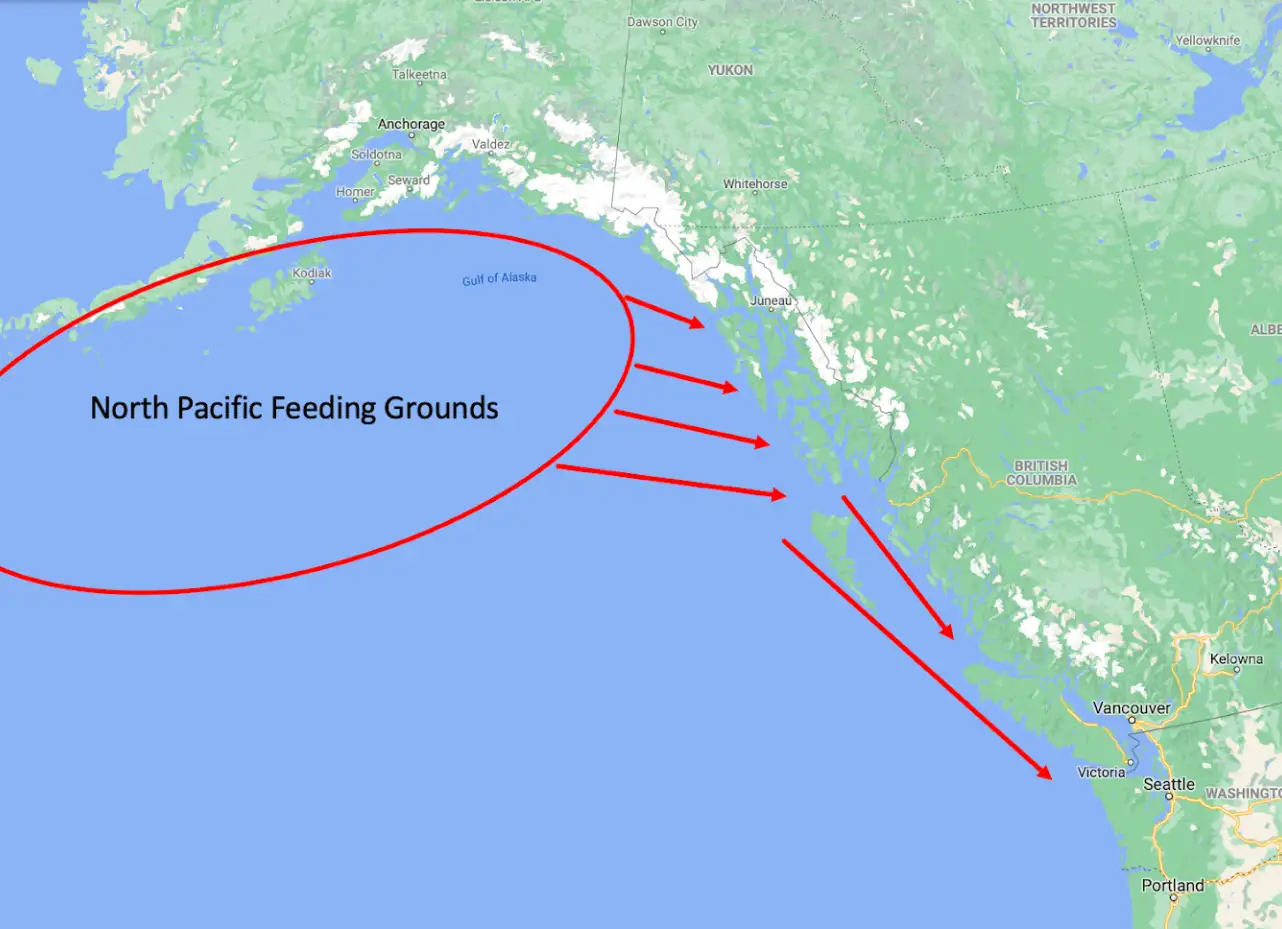
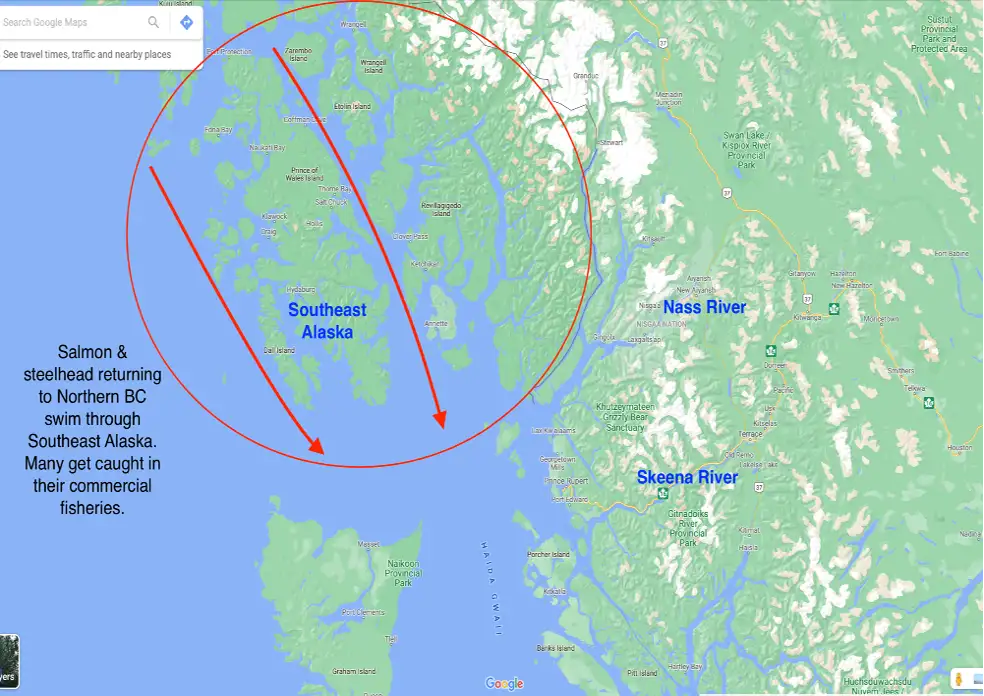

Don’t Canadian commercial fishers catch these same fish?
There were no Canadian fisheries on most Canadian sockeye, pink, and chum populations intercepted in Alaskan fisheries in 2021, as most commercial salmon fisheries were shut down to protect the diminishing number of salmon and steelhead returning to Canada.
In 5 out of the last 6 years, U.S. commercial marine catch of Nass sockeye was greater than Canadian catch. In 7 out of the last 9 years, U.S. commercial marine catch of Skeena sockeye was greater than Canadian catch. In 2021, there was no Canadian commercial marine catch of Skeena or Nass sockeye while the Alaskan catch of Skeena and Nass sockeye was likely in the hundreds of thousands.
A similar situation exists for most other Canadian origin salmon populations. Most commercial fisheries have been closed to protect declining Canadian salmon and steelhead populations.
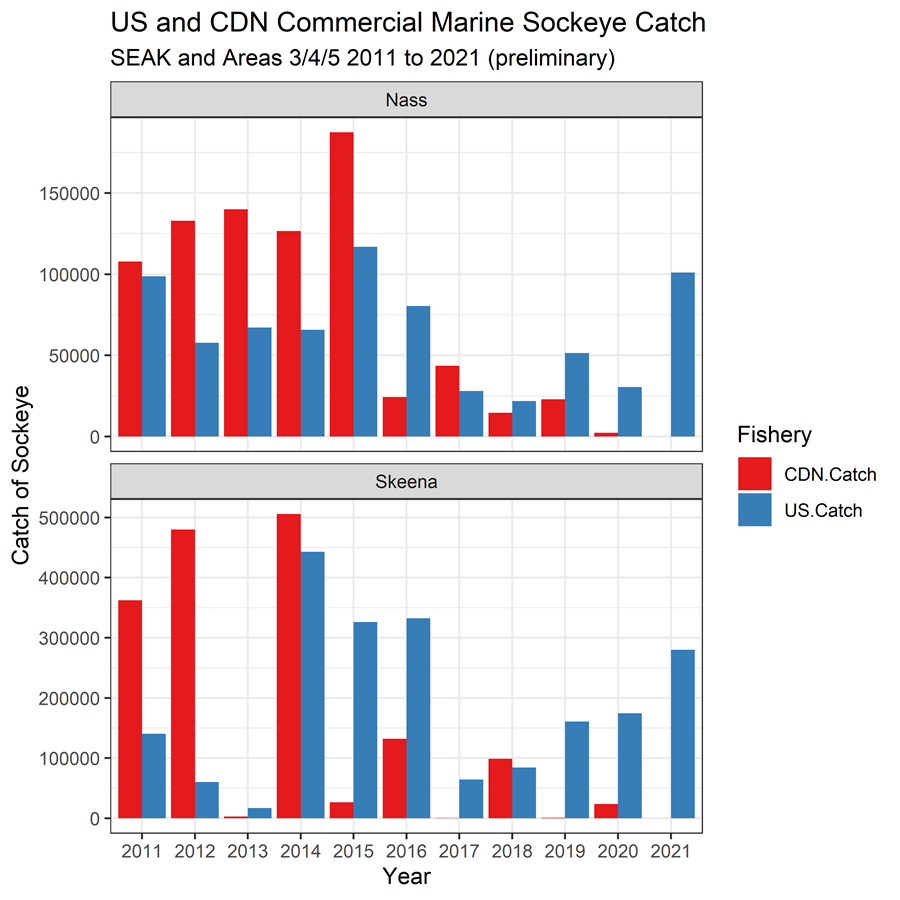
If there are fewer Canadian salmon and steelhead, isn’t Alaska also catching less?
No. In 2021, for example, there were poor returns of sockeye to the Nass, Skeena, and Fraser rivers, but Alaskan catches of these same populations were at near-record highs. Hence, as Canada strives to protect and restore its salmon and steelhead by shutting down fisheries, Alaskan interception fisheries continue, and are now often the largest harvester of Canadian origin salmon. This is because Alaskan fisheries are driven by the abundance of Alaskan pink salmon, and take Canadian sockeye as bycatch. Also, it appears warming ocean temperatures may be causing Canadian sockeye to make landfall further north, rendering them more vulnerable to Alaskan fisheries.
Is Alaskan harvest of Canadian salmon and steelhead unavoidable if Alaska is to catch their abundant pink stocks?
Yes, but Alaskan interceptions of Canadian salmon and steelhead could be significantly reduced. Alaskan interceptions of Canadian origin salmon and steelhead take place primarily in District 104, which is on the outside of the Alaska panhandle, and Tree Point, near the Canadian border just above Prince Rupert (see map above). There are no major Alaskan pink salmon populations in District 104. The pink salmon caught in this area are migrating to the inside portions of the panhandle, or to Canada.
All the Alaskan pink salmon caught in District 104 seine fisheries would still be caught if Alaskan managers simply moved the 10-25% of the fleet that chooses to fish in District 104 on any given opening into the inside portions of Southeast Alaska, to fish with the balance of the fleet. In 2021, the District 104 fishery caught 465,000 sockeye, most of which were Canadian-origin, out of the 700,000 caught by the entire southern Southeast Alaska seine fleet.
The incentive for Alaska to maintain this fishery is that a sockeye is worth ten times the value of a pink salmon. In 2021, Canadian sockeye and Chinook caught in the District 104 fishery increased the total value of the fishery by 30%. And this is without accounting for the Canadian coho, pink, and chum also intercepted in the District 104 fishery. As discussed above, it is unknown what the impact of this fishery was on other Canadian origin salmon (pink, chum, coho, and chinook) and steelhead. But we do know that there is overlap in the migratory timing and routes of these populations and Canadian bound sockeye, and the impact was likely significant.
The other fishery – Tree Point – is much smaller. It is a gillnet fishery targeted on Alaskan hatchery chum. It intercepts Nass origin sockeye, chum, Chinook, coho, and steelhead
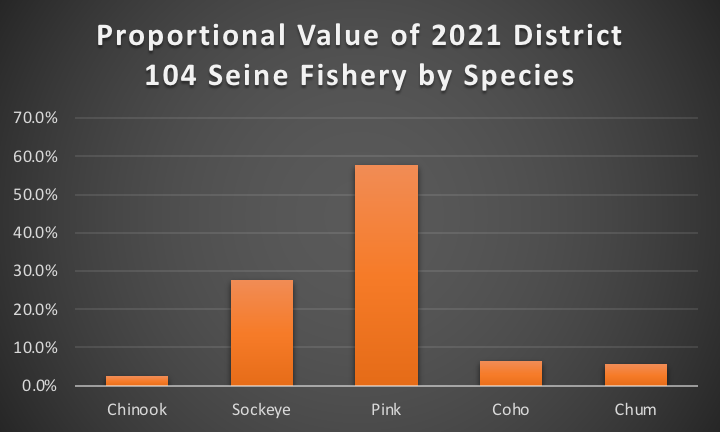
Is the District 104 fishery similar to other Alaskan commercial fisheries?
The District 104 fishery is unique in Alaska. The Alaskan constitution requires managers to ensure that management objectives for both target and non-target stocks and species are achieved. Alaskan managers design net fisheries elsewhere in the state to harvest target stocks while ensuring management objectives for non-target and bycatch populations are achieved. B.C.’s salmon populations caught in the District 104 fishery are not accorded the same protections.
Isn’t there a treaty in place to protect Canadian salmon?
The Pacific Salmon Treaty manages transboundary interceptions between the U.S. and Canada. The treaty was established in 1985 (and subsequently renewed twice) to balance each country’s interceptions of the other’s salmon at a time when salmon were abundant. Since the treaty was first signed, Canadian and southern U.S. salmon stocks have declined to the point where many are threatened or endangered. Canada began closing its interception fisheries in northern B.C. to protect its southern migrating salmon and steelhead stocks in the 1990s. Alaska now has the only major commercial net interception fisheries in place that target salmon and steelhead returning to another jurisdiction.
The treaty does limit (but not eliminate) the number and duration of fisheries in District 104 before the last week of July. This provides some conservation benefit for some Skeena sockeye. However, the peak timing for many populations of Canadian salmon and steelhead is around or after July 31, when the restrictions are removed. In addition, the peak timing of Nass and Skeena sockeye returns appears to be shifting from late July into early August.
The treaty does not require Alaska to provide accurate and verifiable estimates of its salmon and steelhead catch, other than for sockeye. These estimates could be achieved by sampling catch using genetic stock identification techniques widely used in other salmon fisheries in B.C. and Alaska. In fact, the number of Chinook and steelhead (mostly of Canadian origin) caught and killed in Southeast Alaska seine and gillnet fisheries are not recorded or reported at all.
Isn’t the Southeast Alaska salmon seine fishery certified as sustainable by the Marine Stewardship Council?
Yes, but only because of a ‘loophole’ in the way the Marine Stewardship Council (MSC) certifies fisheries. The Southeast Alaska seine fishery would likely not have been certified if the endangered or threatened B.C. and southern U.S. salmon and steelhead populations caught in the Southeast Alaskan seine fishery were returning to Alaska. MSC would have required that accurate catch and mortality data be recorded and publicly reported, and action be taken by fishery managers to reduce impacts. But because the fish are returning to another jurisdiction, MSC certified the fishery without these requirements.
The B.C. salmon industry lost its MSC Certification when it could no longer convince MSC that it was sustainably managing its salmon fisheries. Alaska could face similar risks.
Further, Alaska is one of the world’s largest producers of wild salmon. It markets its salmon internationally with much of it being sold into markets, such as the European Union, that demand it be sustainably caught. If the market were to lose confidence in the sustainability of Alaskan salmon management it would erode Alaska’s reputation in international markets.
Other News
-
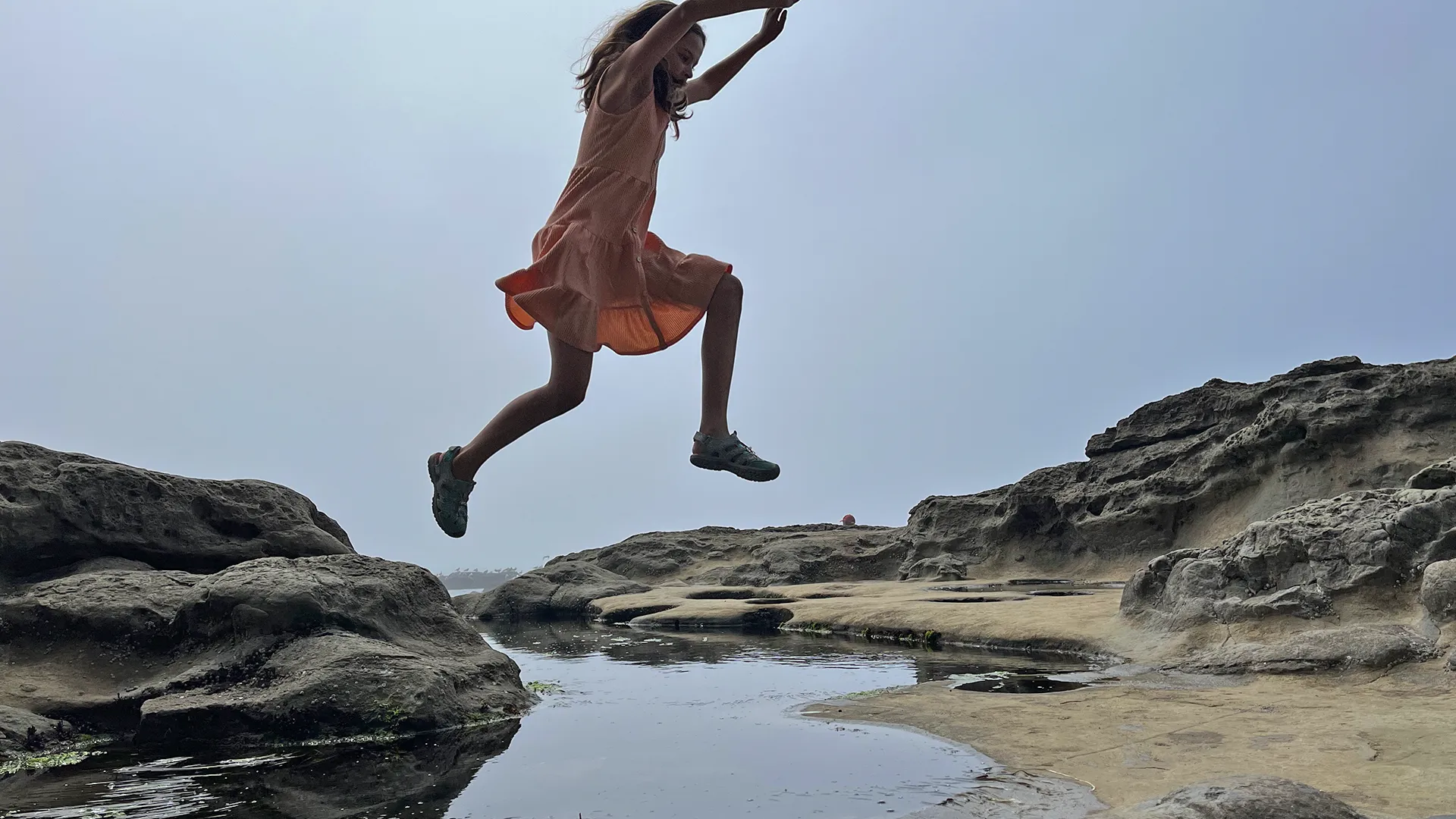
The SkeenaWild Film & Photo Festival is back for 2025!
The 2025 SkeenaWild Film & Photo Festival is back for its 14th year! Submit your short film or photo showcasing the people, wildlife, and wild…
-
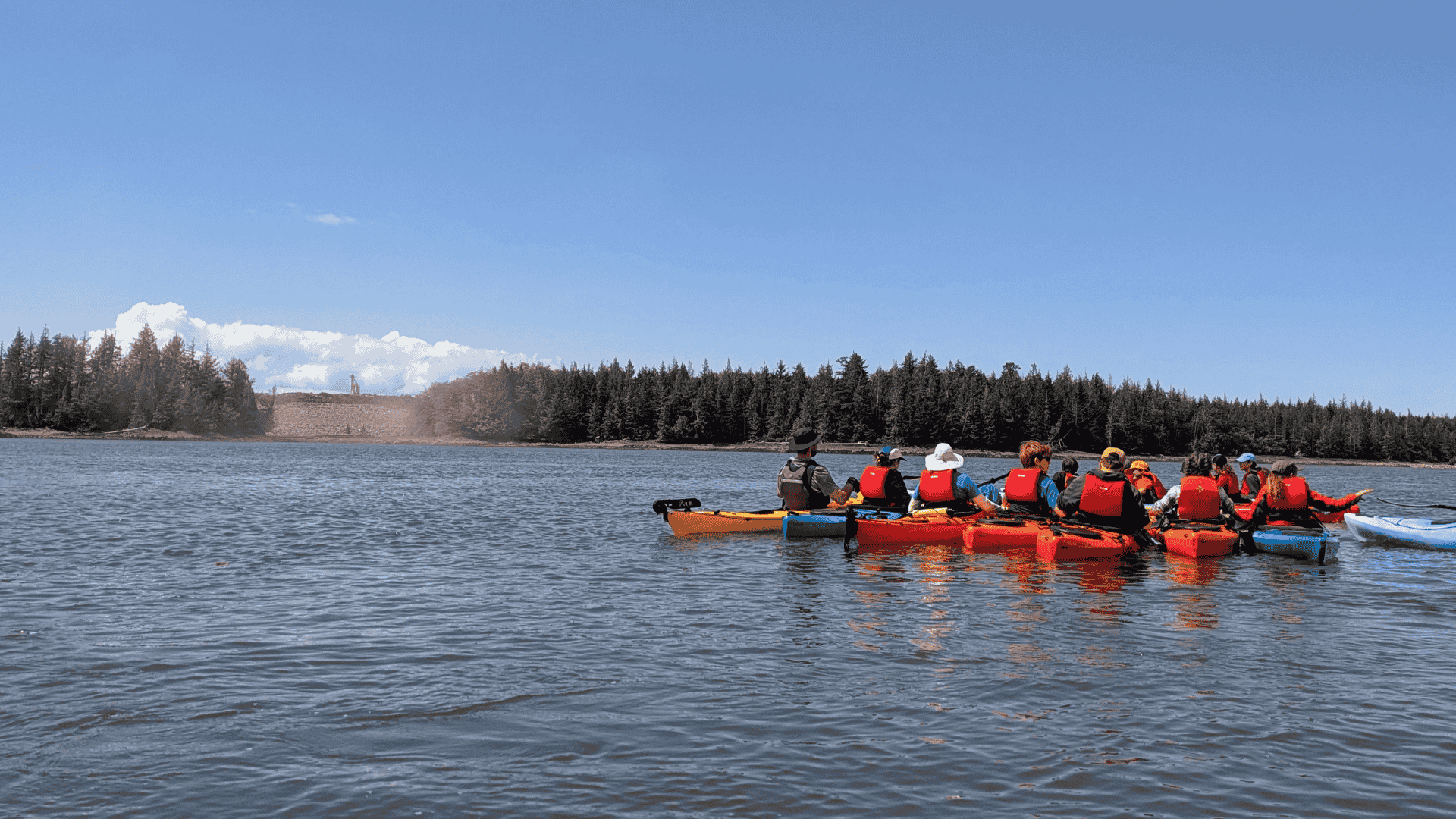
June Highlights: Outdoor Education with SkeenaWild
June Highlights: Outdoor Education with SkeenaWild June Events Kick Off a Summer of Salmon Stewardship Stream science, kayaking, and fry releases connect youth to salmon…
-
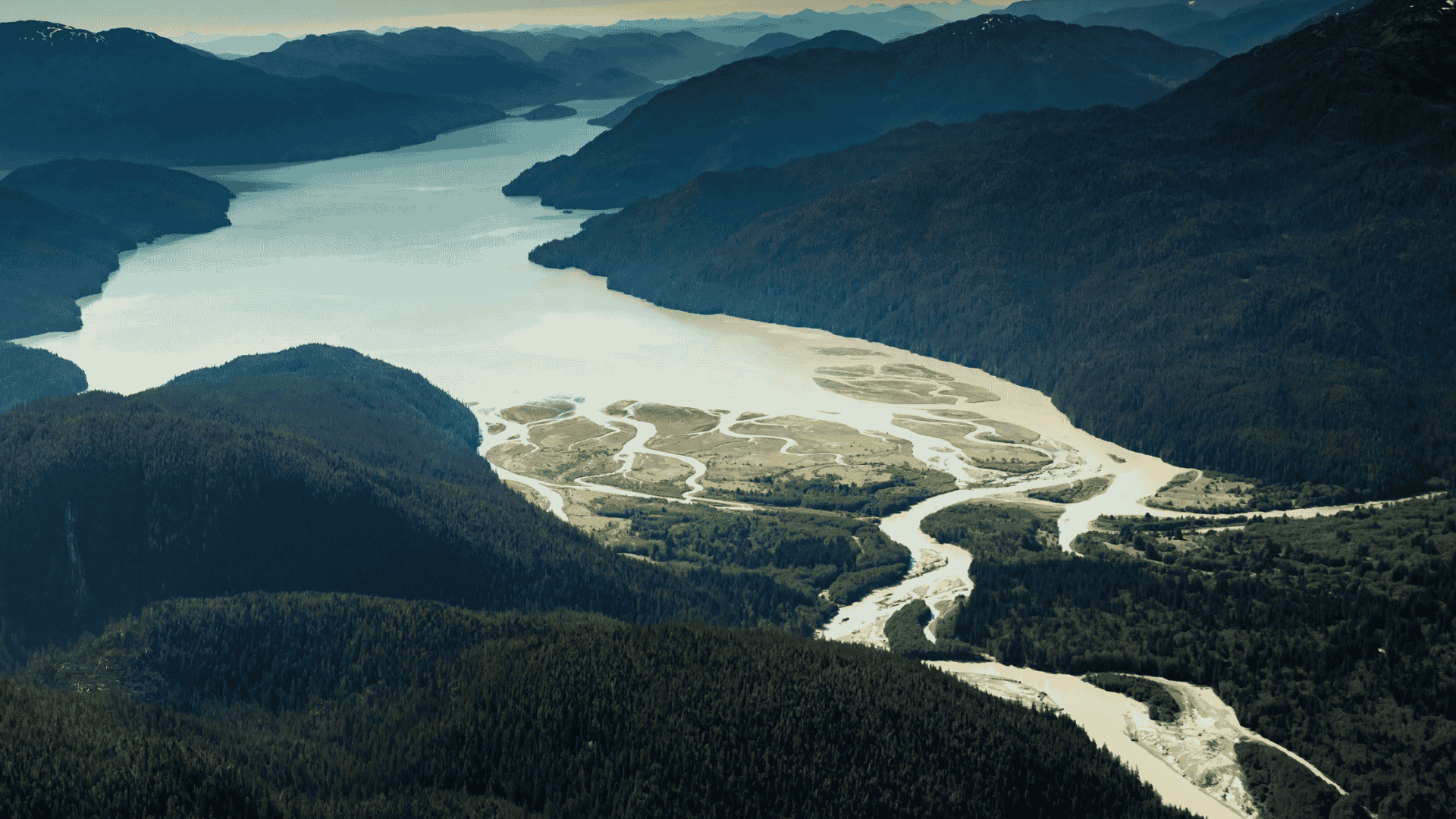
The Dirty Dozen: Why BC’s Mining System Must Evolve to Protect Salmon and Communities
As the Province pushes to expedite new mining approvals through Bill 15 and strategies focused on fast-tracking mining in the northwest, critical safeguards for wild…
-
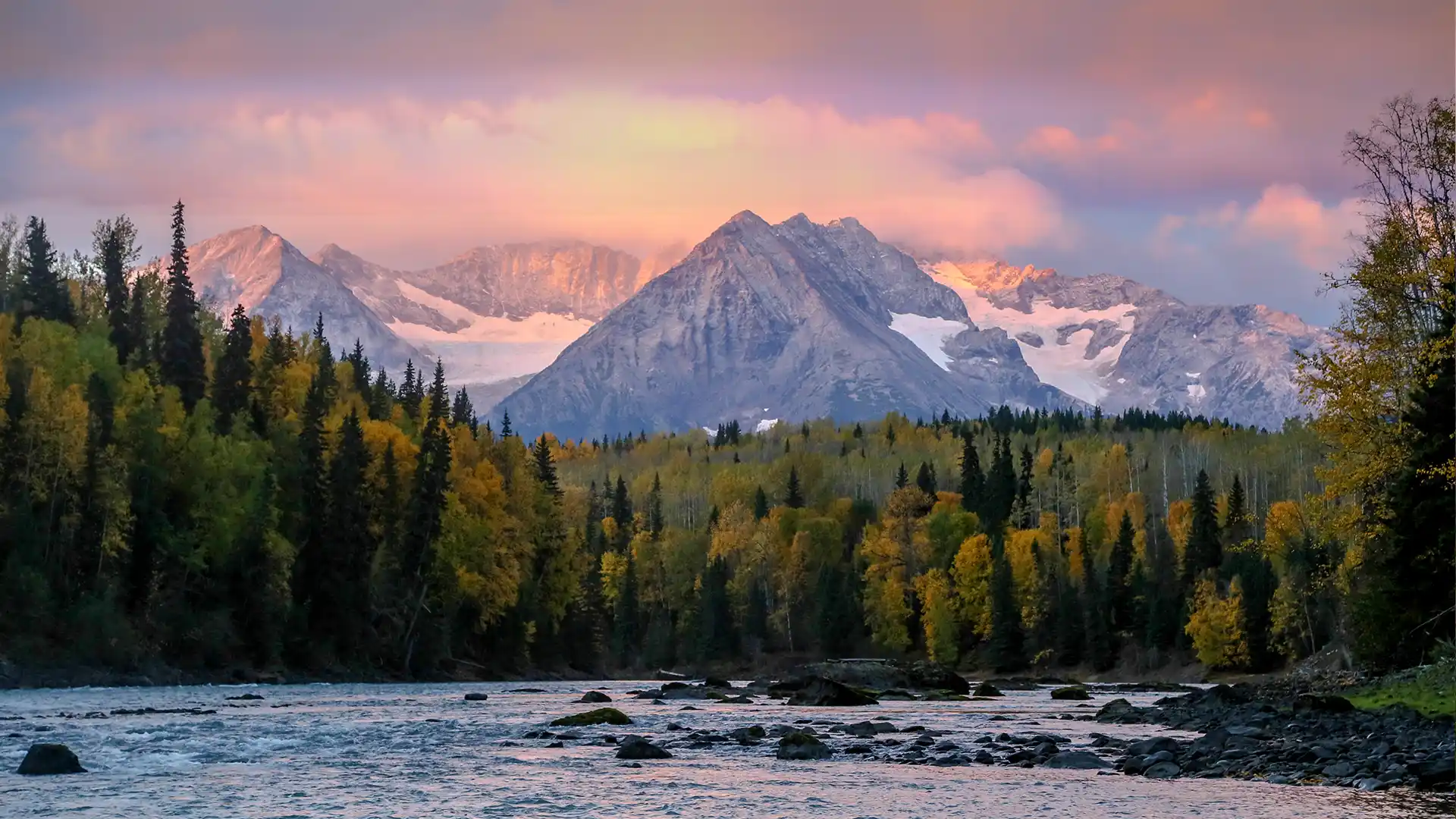
Summer Series: Skeena & North Coast Fisheries Updates 2025
Our fisheries biologist, Kait Yehle gives us a pre-season Skeena and North Coast fisheries forecast and an environmental conditions report of what we might expect…
-

The SkeenaWild Film & Photo Festival is back for 2025!
The 2025 SkeenaWild Film & Photo Festival is back for its 14th year! Submit your short film or photo showcasing the people, wildlife, and wild…
-

June Highlights: Outdoor Education with SkeenaWild
June Highlights: Outdoor Education with SkeenaWild June Events Kick Off a Summer of Salmon Stewardship Stream science, kayaking, and fry releases connect youth to salmon…
-

The Dirty Dozen: Why BC’s Mining System Must Evolve to Protect Salmon and Communities
As the Province pushes to expedite new mining approvals through Bill 15 and strategies focused on fast-tracking mining in the northwest, critical safeguards for wild…
-

Summer Series: Skeena & North Coast Fisheries Updates 2025
Our fisheries biologist, Kait Yehle gives us a pre-season Skeena and North Coast fisheries forecast and an environmental conditions report of what we might expect…